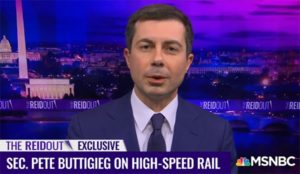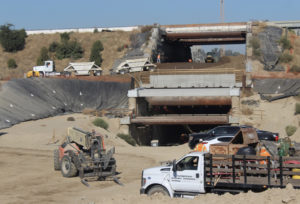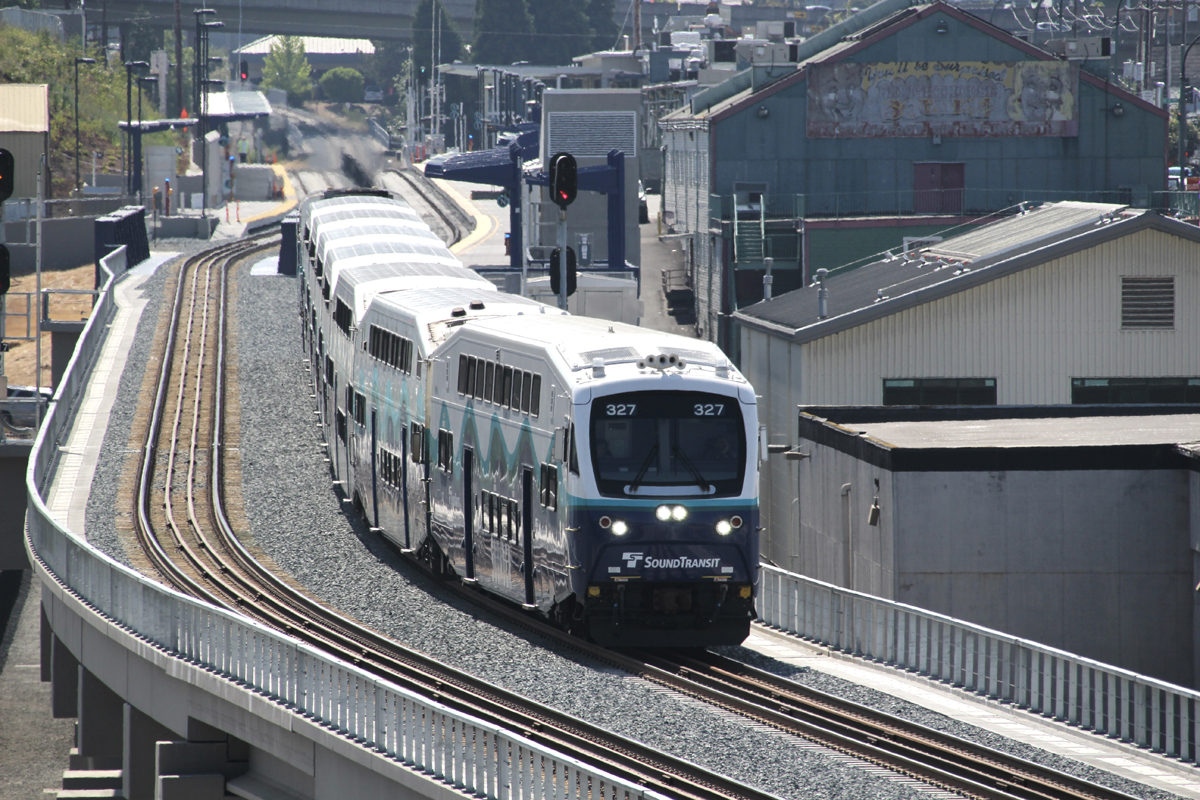
MSNBC
WASHINGTON — In response to a question last week from MSNBC interviewer Joy Reid — “How long is it going to take before I get my high speed rail?” — newly confirmed U.S. Transportation Secretary Pete Buttigieg didn’t answer directly.
“As you know, the president is a big believer in passenger rail,” Buttigieg says. “Look, we’ve been asked to settle for less in this country, and I just don’t know why people in other countries ought to have better train service and more investment in high speed train service than Americans do. You know, Amtrak has done a heroic job with the constraints placed on them; now we’ve got to take it to the next level.”
After referring to Japan, the United Kingdom, Turkey, and other nations that have developed fast trains, the former South Bend, Ind., mayor insists, “I want the U.S. to be leading the world when it comes to access to high speed rail, and I think we have an opportunity to do that, especially with the bipartisan appetite for real investments that we have before us this year.”
Buttigieg sees the same opportunity that Ray LaHood, President Barack Obama’s transportation secretary faced. As a Republican, LaHood was chosen to push bipartisan support for investment not limited to highways, just as infrastructure spending got a big chunk of a $787 billion economic stimulus package.
Unlike some former transportation secretaries — such as Norman Mineta in the George W. Bush administration, who rose through the Washington political establishment and Congress, where airline industry and highway lobbyists roam halls to protect and enhance deeply entrenched funding programs — Buttigieg seeks to reverse course.
That was a struggle for LaHood and his successor in Obama’s second term, former Charlotte, N.C., mayor Anthony Foxx. Republican governors like John Kasich in Ohio, Rick Scott in Florida, and Wisconsin’s Scott Walker derailed the investment on ideological grounds — essentially, because the money was for trains.
If Buttigieg wants to show high speed rail progress quickly, the most likely course is to bolster investment in California. That’s where the California High-Speed Rail Authority has been building right-of-way and undertaking the environmental and engineering studies for a San Francisco-Los Angeles system, utilizing billions in Obama-era stimulus contributions and state bond money.

Bob Johnston
Yet that initiative has become a lightning rod for Republican political opposition, led by House Minority Leader Kevin McCarthy (R-Calif.). He has repeatedly criticized the project’s scope, siding with critics such as business owners, almond growers, and dairy farmers in the San Joaquin Valley, north of his Bakersfield-area district. He encouraged the Trump Administration’s attempt to rescind some Federal Railroad Administration grants and make the authority pay back the federal government, though that never happened.
Additionally, Republican members of the House Transportation and Infrastructure Committee felt their input was left out of the Democratic-led transportation reauthorization investment blueprint, H.R 2, that passed in the last Congress only to die in the Senate. They objected to pro-rail and “green” provisions that supplanted highway-oriented reauthorizations of the past.
Local opposition to the privately funded Texas Central Dallas-Houston high-speed rail project has also become a landowner’s rights issue championed by the state’s GOP delegation. Their concerns mirror “not in my back yard” protests across the country that have stymied much smaller rail expansion projects.
In response to an observation by Reid about how communities were torn apart when the Interstate Highway System was constructed, Buttigieg says, “We have the opportunity to build and enrich neighborhoods instead of breaking them up.”
The new transportation secretary’s challenge is to build a consensus and funding mechanism for rail investment transcending political divisions that now exist.
Buttigieg’s MSNBC interview is available here.














The term “High Speed Rail” sounds wonderful to politicians and people that don’t have a stake in it, and until Amtrak has or builds its own tracks to accommodate the term “High Speed Rail” for LD trains, as well as replacing the entire board and start being accountable in their spending, the term “High Speed Rail” is only a word.